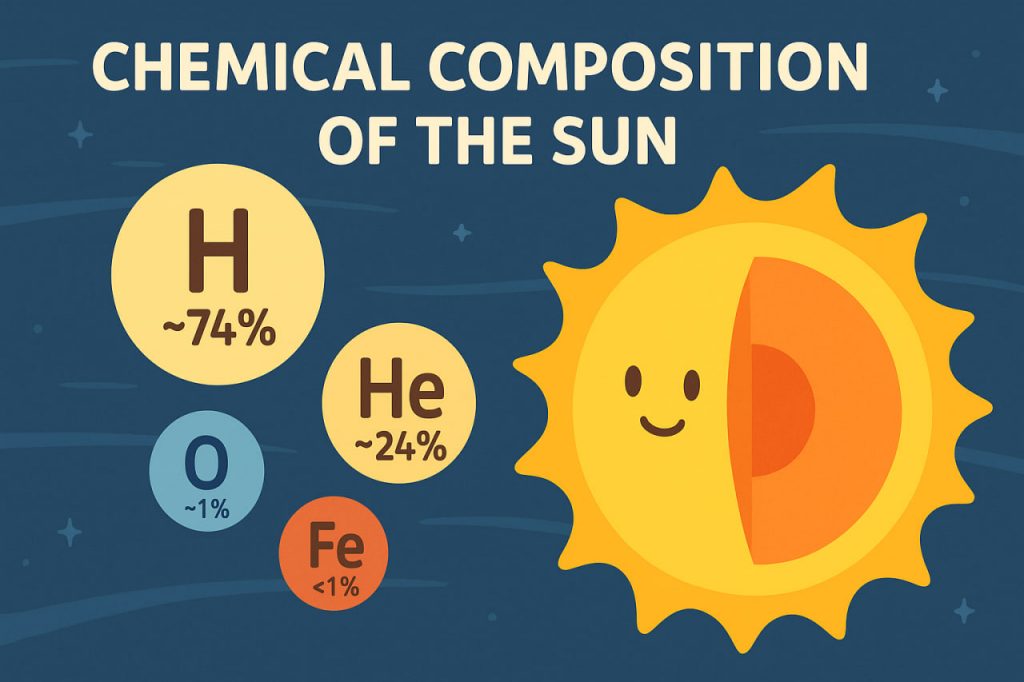The Sun, a glowing sphere of hot plasma at the center of our solar system, may appear uniform to the naked eye, but it has a rich and complex chemical makeup. Unlike a solid body like Earth, the Sun is composed almost entirely of gas and plasma. Understanding its composition helps astronomers learn how stars form, evolve, and influence surrounding space.
Main Elements in the Sun
The Sun’s mass consists of:
- Approximately 74% hydrogen
- About 24% helium
- Roughly 2% heavier elements (called “metals” in astronomy)
These values refer to the Sun’s composition by mass. If we measure by the number of atoms, hydrogen makes up more than 90% of the total.
Hydrogen and helium were created shortly after the Big Bang, while the heavier elements were formed in earlier generations of stars and incorporated into the Sun during its formation around 4.6 billion years ago.
Detailed Composition (by mass)
Here are the approximate proportions of key elements:
| Element | Percentage by Mass |
|---|---|
| Hydrogen (H) | ~73.5% |
| Helium (He) | ~24.8% |
| Oxygen (O) | ~0.8% |
| Carbon (C) | ~0.3% |
| Neon (Ne) | ~0.2% |
| Iron (Fe) | ~0.2% |
| Nitrogen (N) | ~0.1% |
| Silicon (Si) | ~0.07% |
| Magnesium (Mg) | ~0.05% |
Although the heavier elements make up only a small portion of the Sun’s mass, they play important roles in its structure and spectral properties.
Where Is This Composition Found?
- The outer layer of the Sun, called the photosphere, is where scientists measure its composition using spectroscopy—analyzing the light spectrum emitted by the Sun.
- The core of the Sun, where nuclear fusion occurs, is predominantly hydrogen and helium, undergoing reactions that release energy as light and heat.
Why the Sun Shines
The fusion of hydrogen atoms into helium in the Sun’s core releases massive amounts of energy. This energy travels outward through the Sun’s layers and eventually radiates into space, powering life on Earth and shaping the solar system.
Over time, as hydrogen is converted to helium, the composition of the Sun’s core changes, which will influence its evolution into a red giant in billions of years.
—
Glossary
- Plasma – A high-energy state of matter consisting of ionized gas
- Spectroscopy – A method of studying the composition of light from a star
- Nuclear fusion – A process where atomic nuclei combine to form heavier nuclei, releasing energy
- Photosphere – The visible surface layer of the Sun
- Metal (in astronomy) – Any element heavier than helium


